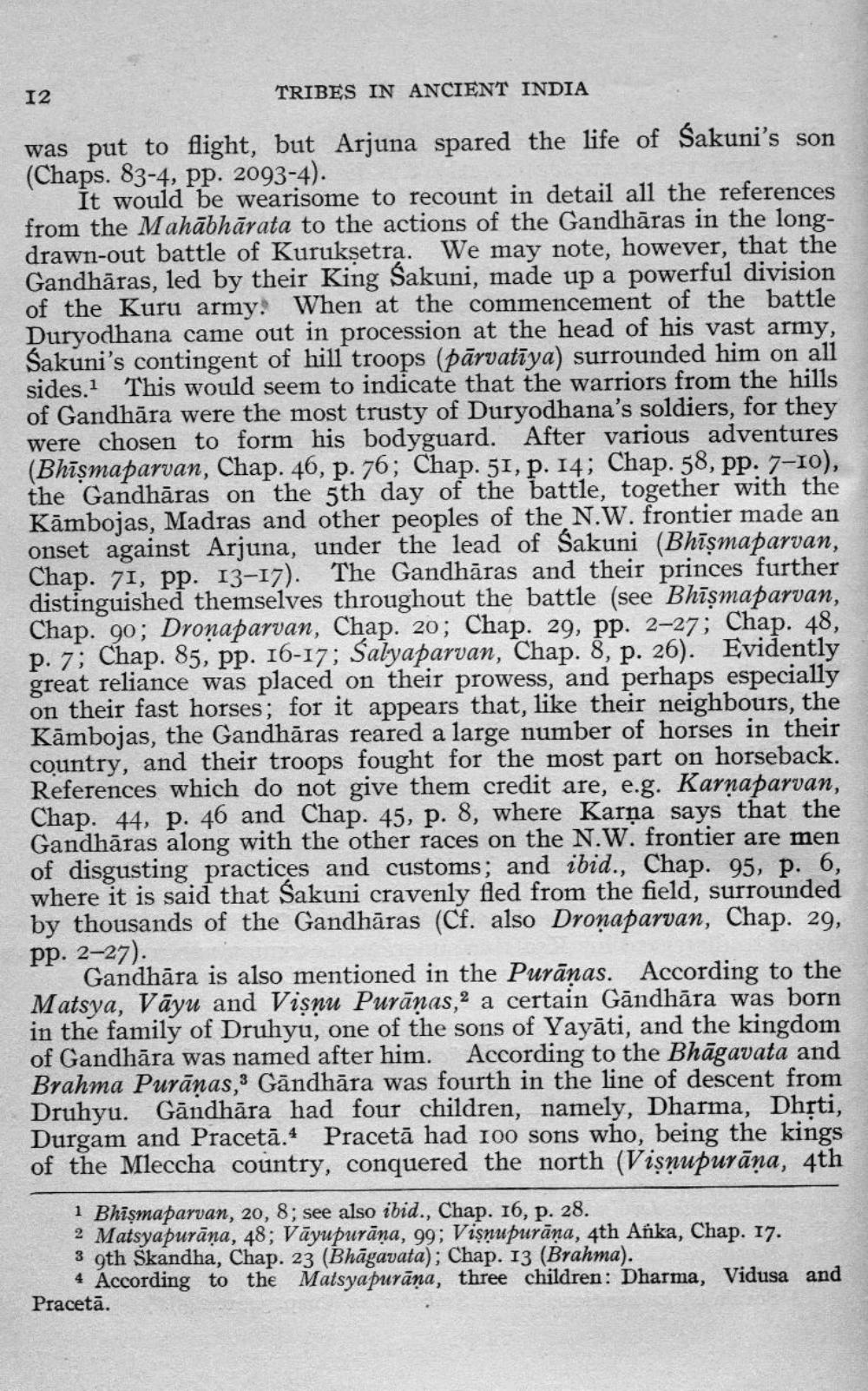________________
12
TRIBES IN ANCIENT INDIA was put to flight, but Arjuna spared the life of Sakuni's son (Chaps. 83-4, pp. 2093-4).
It would be wearisome to recount in detail all the references from the Mahābhārata to the actions of the Gandhāras in the longdrawn-out battle of Kuruksetrạ. We may note, however, that the Gandhāras, led by their King Sakuni, made up a powerful division of the Kuru army. When at the commencement of the battle Duryodhana came out in procession at the head of his vast army, Sakuni's contingent of hill troops (pārvatīya) surrounded him on all sides.1 This would seem to indicate that the warriors from the hills of Gandhāra were the most trusty of Duryodhana's soldiers, for they were chosen to form his bodyguard. After various adventures (Bhīşmaparvan, Chap. 46, p. 76; Chap. 51, p. 14; Chap. 58, pp. 7-10), the Gandhāras on the 5th day of the battle, together with the Kāmbojas, Madras and other peoples of the N.W. frontier made an onset against Arjuna, under the lead of Sakuni (Bhīşmaparvan, Chap. 71, pp. 13-17). The Gandhāras and their princes further distinguished themselves throughout the battle (see Bhīşmaparvan, Chap. 90; Dronaparvan, Chap. 20; Chap. 29, pp. 2-27; Chap. 48, p. 7; Chap. 85, pp. 16-17; Salyaparvan, Chap. 8, p. 26). Evidently great reliance was placed on their prowess, and perhaps especially on their fast horses; for it appears that, like their neighbours, the Kāmbojas, the Gandhāras reared a large number of horses in their country, and their troops fought for the most part on horseback. References which do not give them credit are, e.g. Karnaparvan, Chap. 44, p. 46 and Chap. 45, p. 8, where Karņa says that the Gandhāras along with the other races on the N.W. frontier are men of disgusting practices and customs; and ibid., Chap. 95, p. 6, where it is said that Sakuni cravenly fled from the field, surrounded by thousands of the Gandhāras (Cf. also Dronaparvan, Chap. 29, pp. 2-27).
Gandhāra is also mentioned in the Purānas. According to the Matsya, Vāyu and Visnu Purānas,2 a certain Gāndhāra was born in the family of Druhyu, one of the sons of Yayāti, and the kingdom of Gandhāra was named after him. According to the Bhāgavata and Brahma Purānas,3 Gāndhāra was fourth in the line of descent from Druhyu. Gāndhāra had four children, namely, Dharma, Dhrti, Durgam and Pracetā.4 Pracetā had 100 sons who, being the kings of the Mleccha country, conquered the north (Vişnupurāņa, 4th
1 Bhismaparvan, 20, 8; see also ibid., Chap. 16, p. 28. 2 Matsya purāņa, 48; Vāyupurāna, 99; Vişnupurāņa, 4th Anika, Chap. 17. 3 gth Skandha, Chap. 23 (Bhāgavata); Chap. 13 (Brahma).
4 According to the Matsyapurāna, three children: Dharma, Vidusa and Pracetā.




